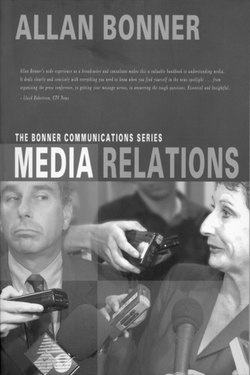Читать книгу The Bonner Business Series â Media Relations - Allan Bonner - Страница 17
На сайте Литреса книга снята с продажи.
Communication
ОглавлениеNobody wants to read the same phrase or sentence over and over again. We’d assume the writer was too lazy to edit his or her work. But in oral communication, repetition is not only desirable but mandatory if you want your message to be clearly understood and believed.
Shakespeare was well aware of this and used repetition to good effect to assist comprehension in the primitive theatres where his plays were first performed.
The original Globe Theatre in London had only a bare stage with little or no scenery. Plays had to be staged in daylight because there was no electricity. In those days there could be two or three thousand people milling around in the “pit” at the front of the stage and in the seats, talking, laughing, arguing or fighting. Drunks, pickpockets and hookers were plentiful. Ushers and bouncers hadn’t been invented.
This was the daunting atmosphere confronting actors who’d appear on the stage without the benefit of dimming house lights and rising curtains to begin the performance. Imagine all that noise and distraction. Perhaps 500 audience members had their backs to the stage and another 1000 were in midsentence with a seat mate. In the middle of all this, two actors walk out on stage and start talking:
| Bernardo: | Who’s there? |
| Francisco: | Nay, answer me; stand, and unfold yourself. |
| Bernardo: | Long live the king! |
| Francisco: | Bernardo? |
| Bernardo: | He. |
| Francisco: | You come most carefully upon your hour. |
| Bernardo: | ‘Tis now struck twelve, get thee to bed, Francisco. |
| Francisco: | For this relief much thanks; ‘tis bitter cold, And I am sick at heart. |
| Bernardo: | Have you had quiet guard? |
| Francisco: | Not a mouse stirring. |
| Bernardo: | Well, good night. If you do meet Horatio and Marcellus, The rivals of my watch, bid them make haste. |
| [Enter Horatio and Marcellus] | |
| Francisco: | I think I hear them. Stand, ho! Who is there? |
| Horatio: | Friends to this ground. |
| Marcellus: | And liegemen to the Dane. |
| Francisco: | Give you good night. |
| Marcellus: | O, farewell, honest soldier. Who hath reliev’d you |
| Francisco: | Bernardo hath my place. Give you good night. |
| [Exit Francisco] | |
| Marcellus: | Holla! Bernardo! |
| Bernardo: | Say—what, is Horatio there? |
| Horatio: | A piece of him. |
| Bernardo: | Welcome, Horatio; welcome, good Marcellus. |
| Marcellus: | What, has this thing appear’d again tonight? |
Shakespeare was no fool. He recognized the limitations of the venues for his plays and actors. He knew that most of his words would go literally and figuratively over the heads of his audience. He knew his audience had distractions. So he used a very simple technique: repetition. He had his actors tell us over and over again that it’s night.
It takes me about eight minutes to read the Act I of Hamlet out loud. In that short time, the actors mention directly that it is night 16 times (“Give you good night!) and indirectly 19 times (cold, sick at heart, quiet guard etc). At my rate of reading, the time of day is mentioned every 14 seconds. No matter how distracted you are, you are going to know the time of day.
This is a formula that worked well for Shakespeare and he repeated it often. He was also fond of using triptychs: “friends, Romans, countrymen” or “thus, I die, die, die.” Imagine yourself on that 10foothigh stage almost surrounded by three rows of audience members. Deliver one of the triptych’s words to the front, another to your left and the last to your right. As Shakespeare intended, and you are including everyone.
Simplicity, brevity, clarity and repetition. If it was good enough for Shakespeare, it’s good enough for you.
Because the ear is such an imperfect instrument there isn’t much point in exposing it to extremely complicated words and messages. The average university student has difficulty comprehending a sentence longer than 18 words. When speaking to reporters, keep it short and keep it simple.
We know that visual aids help a presentation, whether on paper or in the boardroom. Graphs, maps, charts and diagrams can increase retention by as much as 50%. But did you know that studies show the same is true for oral communication? The same senior executives who wouldn’t dream of going into the boardroom without visual aids think nothing of going into a media encounter without anecdotes, stories and examples — the verbal equivalent of visual aids.
The key is to tell a story and paint a word picture. Don’t be afraid to use trigger phrases such as “picture this . . . imagine the following . . . our vision is . . . what we see is . . . what I’d like you to see is . . . .” These phrases will trigger verbal, visual aids as you speak. Think visually and increase the power of your media sound bites, clips or actualities.
